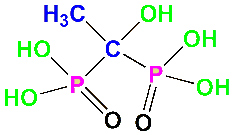- Joined
- Aug 14, 2019
- Messages
- 4,198
- Reaction score
- 12,164
The ocean would tell you so. The places where most of our corals are collected are about 1-2 ppb of phosphate and they are not limited in anyway - some grow at an outstanding clip while also being out of the water for hours at a time (there is not anything for them to catch or eat in these places, so they get what they get from the sun and the elements in the water). I am afraid that wanting more building blocks is a recent human phenonomen likely taking the blame for inferior biodiversity, or something else in modern husbandry, in most tanks set up in the last five years, or so.
With your land plant analogy, remember what happens if you keep with that surplus all of the time... they suffer. Your analogy is a sparse occurrence... maybe once or twice a year with a fertilization. Would anybody care to succumb these plants to 24x7 higher levels of building blocks? Anybody spill some fertilizer on your lawn and see what happens? It is probably non-sequitur between plants and corals anyway.
My question still stands, in actual science and the rest of nature, what evidence is there that a larger surplus is better than a smaller one? Do you need 100 cheeseburgers in the car when 1 will fill you up? Do you need more fertilized that what a plant can process, or just enough? There is evidence that higher levels are harmful to all living tissue at various intervals and that a low, but enough balance is what matters.
I get and agree with there being some limit on the absolute level of phosphate that a coral simply can’t absorb but most all of us hobbyists are nowhere near that limit.
The rather dramatic increase in Acropora skeletal growth at the .5 phosphate level compared to lower levels is something that can’t be ignored.
This is an isolated experiment in an aquarium setting so can be replicated and we can deduce the only variable that changed were the phosphate levels. Is it that phosphates directly impacted the growth or do they impact something else that spurs the growth? That we don’t know.






















